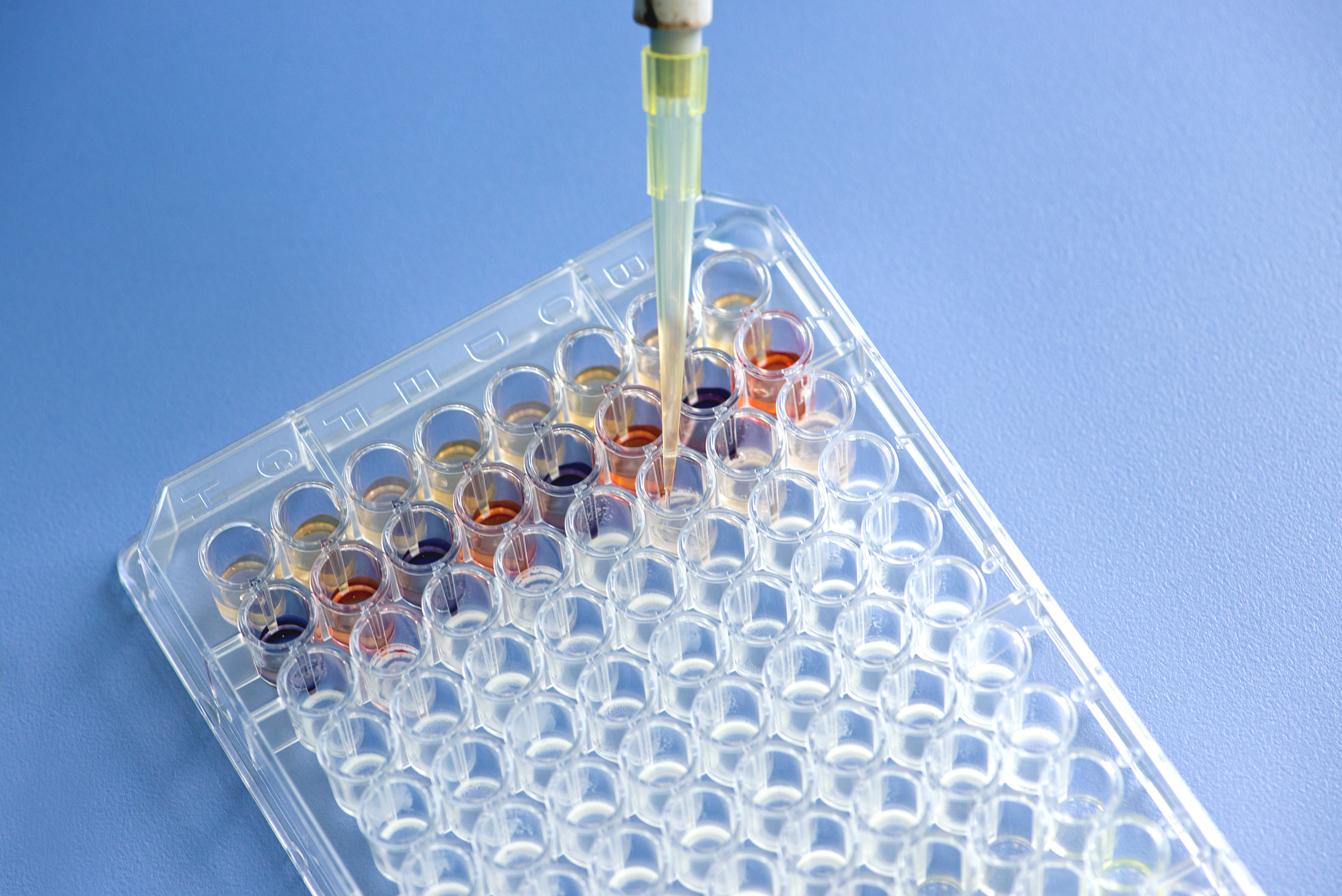Plaque and proliferation assays for efficacy testing of antibacterial and antiviral surfaces and coatings
Multi-resistant germs have been a serious problem in healthcare for years. Covid-19, an infectious disease caused by SARS-CoV2, made the concepts of hygiene and disinfection an everyday topic around the world. Consequently, the need for antimicrobial technologies (antimicrobial coatings, UV disinfection) increased in many entrepreneurial sectors, including healthcare, automotive, construction, and public transportation. This wide range of applications presents different technological challenges. Fraunhofer IFAM therefore tests antimicrobial efficacy against model viruses, bacteria, and fungi according to customer-specific requirements.
Plaque and proliferation assays as test methods
In the microbiological analysis laboratory at Fraunhofer IFAM, an interdisciplinary team of scientists works closely together on the implementation and further development of test methods to investigate antimicrobial efficacy. As part of research projects and industrial contracts they analyse and evaluate product surfaces and materials with regard to antibacterial and antiviral properties. The team's overarching goal is to provide a product-oriented assessment that gives evidence of efficacy or can lead to optimization and further development. The measure of an active ingredient's efficacy is the reduction of germs within a specified exposure period. The requirement profiles differ depending on the material, area of application, and test specification. What they all have in common, however, is that the reduction is expressed in log levels and represents a reduction in the number of germs by one decimal power. For example, a 99.9% reduction (3 log10 levels) is common for many hygiene products.
For this purpose, modern testing and analysis methods are available in the laboratories of Fraunhofer IFAM, which can support or finally validate the entire development spectrum of a product. Established methods include the plaque assay for quantifying infectious cytopathic viruses (e.g. with Escherichia virus Qbeta) which is based on the visible change of infected cells. A comparable efficacy testing against bacteria (e.g. Escherichia coli, Bacillus subtilis) can be realized with a proliferation test. This test procedure determines whether and to what extent the proliferation of bacteria is inhibited as a function of the antimicrobial agent used compared to a control sample. The possibility of implementing specific test conditions such as illumination scenarios (e.g. UV, daylight LED) completes the expertise of Fraunhofer IFAM.
Biological testing methods for development of antibacterial and antiviral materials
The experts at Fraunhofer IFAM develop product ideas, prototypes, and improvements of existing products together with customers and use microbiological test methods to optimize their antimicrobial effect. How effective a disinfection measure proves to be on the viability of pathogenic microorganisms depends on several factors. First of all, the actual mode of action must be taken into account, as this can be caused by physical or chemical effects, for example. Interacting mechanisms of action are also possible, e.g. light of a certain wavelength in combination with special coating components.
In addition, the specific material properties play a role, which are closely linked to the feasibility of biological test methods. Is there sensitivity to solvents, does the material bind moisture, does it need physical activation, does the material already have an antimicrobial effect without the active ingredient, e.g., through binders or additives in coatings? Questions that arise with every new material and process.
There is also a focus on biological parameters. Above all, the creation of a standardized, contamination-free test environment and the selection of suitable test organisms (viruses, bacteria, fungi) are of crucial relevance here. Material expertise and microbiological know-how are therefore equally important in order to be able to carry out targeted development work by means of goal-oriented test procedures. Questions concerning the minimum concentration of active ingredient, the reduction of germs depending on the contact time, and the potential effect on different model organisms and viruses can be answered at Fraunhofer IFAM using modern laboratory tests.
Within the competence area of "Paint and Lacquer Technology," Dr. Dorothea Stübing's "Antimicrobial coatings and biofouling control" group has been pursuing the development and testing of antimicrobial surfaces for several years. To this end, the team not only has interdisciplinary expertise in materials and natural sciences, but also uses a broad spectrum of experiments and methods. This spectrum includes state-of-the-art real-time PCR or quantitative PCR (qPCR) diagnostics in the microbiology laboratory of Fraunhofer IFAM Bremen. The fields of application for the group's research and development work are, for example, in maritime technologies, medical technology, aviation, or automotive engineering.
 Fraunhofer Institute for Manufacturing Technology and Advanced Materials IFAM
Fraunhofer Institute for Manufacturing Technology and Advanced Materials IFAM